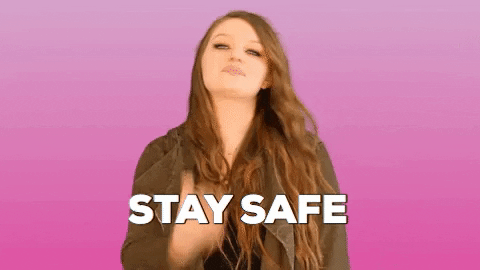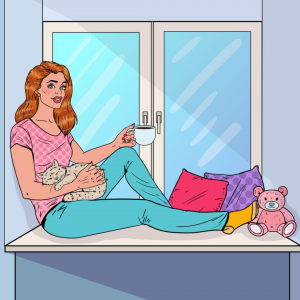Steph Golds is a valued member of the Shona team, a counselling psychotherapist, who has spent countless hours working with young girls. We asked for her advice on staying calm when the world keeps spinning…
There is a lot of scary or stressful information swirling around out there at the moment. It can be easy to get swept along with the tide of panic or to develop your own internal panic, which isn’t a nice feeling. We’ve come up with some tips to help with stress and worry. What’s really great about them is that they apply to any scenario that worries you. So have a read and stick them in your toolkit.
Number One: Wired for safety

Our brains are designed to keep us safe. When we come into contact with a situation (or information about a situation), we assess what that means for us and respond accordingly. If we see the situation or information as threatening to us, our brain will send a signal to our nervous system, telling it to fire up so that we can survive. A fired-up nervous system feels like panic, which isn’t pleasant, but it is a valid response. However, it’s important to look back on how we assessed the situation because that’s what sent the signal to the brain in the first place.
Number Two: Facts
When we are in the assessment phase, we need facts. Find reliable sources with truthful and professional information. Did you look for all the facts, or was it hearsay? Did you ask questions to clear up any uncertainty? Did you Google it? Did you jump on social media and come across scare posts? The information we take in will directly affect our response.
Number Three: Breathing

Notice your breath. Is it shallow – high up in your chest and collarbone area? Or is it deeper – in your rib-cage area? Or deeper still – in the tummy? Shallow breathing engages the nervous system. Deep breathing disengages the nervous system and allows us to relax. That’s why everyone says ‘take a deep breath’, because it really does work! Take 2–3 minutes, put both feet on the ground, close your eyes and direct your breath – fully in and fully out – and feel the panic start to melt away. When we direct our breath, we can direct our minds.
Number Four: Irrational to rational

When we are in a state of panic or anxiety, the brain is in an irrational place and we’re not able to make clear decisions. Along with deep breathing, there is another way that we can move our brains from irrational back to rational again: by doing something with our hands.This is a proven method, and you don’t have to be an artist! Here are some suggestions: jigsaws, crosswords, bracelet-making, baking, sketching, writing, knitting, colouring, scrapbooking, playing with a pet, playing an instrument … the list goes on. Find what works for you.
Number Five: Help and seek help

If you are panicking, find someone who isn’t. We often seek out people who are responding in the same way as us, but if you want to reduce panic, find someone who looks calm. And if you’re the calm person, find someone who might be panicking and help them. We’re all in this thing together.
And finally, the most important thing to remember is, no matter what happens, You’ve Got This!
If you would like to support us and the work that we do, you can donate below






